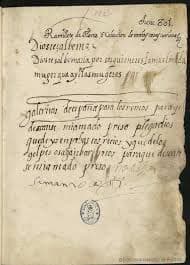 A bouquet of a few flowers that is formed artificially is called a bouquet . It is a small group that allows you to enjoy the floral aroma and stands out for its color.
A bouquet of a few flowers that is formed artificially is called a bouquet . It is a small group that allows you to enjoy the floral aroma and stands out for its color.
The corsage, like the bouquet, can be used as a gift or as a wardrobe accessory . It is also used for ritual or symbolic purposes , such as at funerals to express the pain felt at the death of a person.
Herb bouquets , meanwhile, are common in gastronomy . Many recipes include the inclusion of a sprig of parsley , a sprig of mint , etc.
In a broader sense, a bouquet is a set of useful, distinguished or prominent elements . In this case the notion is associated with a selection or gathering of pieces of great value or importance.
For example: “During his visit to the city, the presidential candidate unveiled a bunch of proposals with which he aims to reactivate the regional economy,” “A bunch of young people aspire to win the beauty pageant crown,” “Sports journalists consider that there are a group of four or five teams that are the main favorites.”
Suppose a writer has just released his new novel. To disseminate the book , his publisher organizes a bunch of presentations in various locations: thus, for a month, the author will visit twenty municipalities, offering talks in each of them. As you can see, this bunch of activities works as a mechanism to publicize the brand new work.
Since we are in the field of literature, we cannot fail to mention the poetic anthology that contains the Ramillete de flores or collection of various curious things , a small manuscript that is preserved in the National Library of Spain and belongs to the second half of the 16th century. Its importance is considerable, since there are not many other handwritten sources for vihuela (the stringed musical instrument plucked with a plectrum or bow).
 In this book, which measures 23 by 17 centimeters, you can read ten works for vihuela. It is known that its copying took place in the year 1593, so that it is located seventeen years after the publication of El Parnaso , by Esteban Daza , the last book for this musical instrument . The fact that it was published at that time tells us that the vihuela probably still enjoyed sufficient popularity and that, therefore, other works with similar content were published that have not yet been found.
In this book, which measures 23 by 17 centimeters, you can read ten works for vihuela. It is known that its copying took place in the year 1593, so that it is located seventeen years after the publication of El Parnaso , by Esteban Daza , the last book for this musical instrument . The fact that it was published at that time tells us that the vihuela probably still enjoyed sufficient popularity and that, therefore, other works with similar content were published that have not yet been found.
Regarding the typographic source used by the person in charge of copying this bouquet, it is estimated that the work took place in the Royal Palace of Madrid , more precisely in its library. Note that currently the kings do not live in this building, but in the Zarzuela Palace, which is why it is used for solemn acts and ceremonies of national importance.
The bouquet received a new binding in the 18th century. Its leaves had to be numbered again, because ten of them had been lost. Throughout the process , an unfortunate error occurred: while the volume was being guillotined, although the literary text was not affected, a large part of the musical notation was lost.
Thanks to the work of expert professionals in the reconstruction of scores, it is possible to recover the missing parts to a certain degree. It is estimated that the binding that can be seen today was made around 1900. At that time this bouquet was already known in the literature environment, but not in the music environment.
